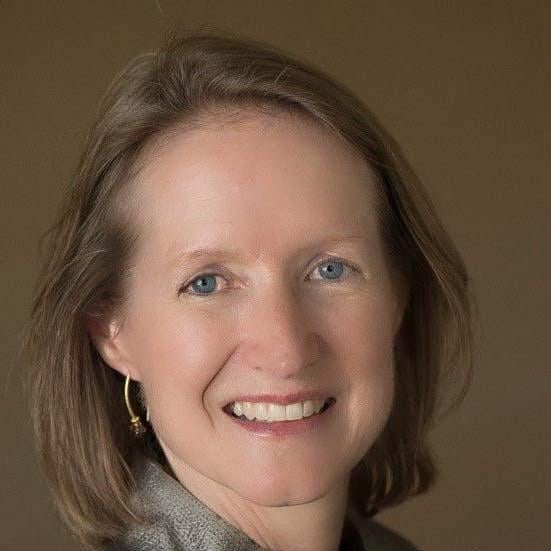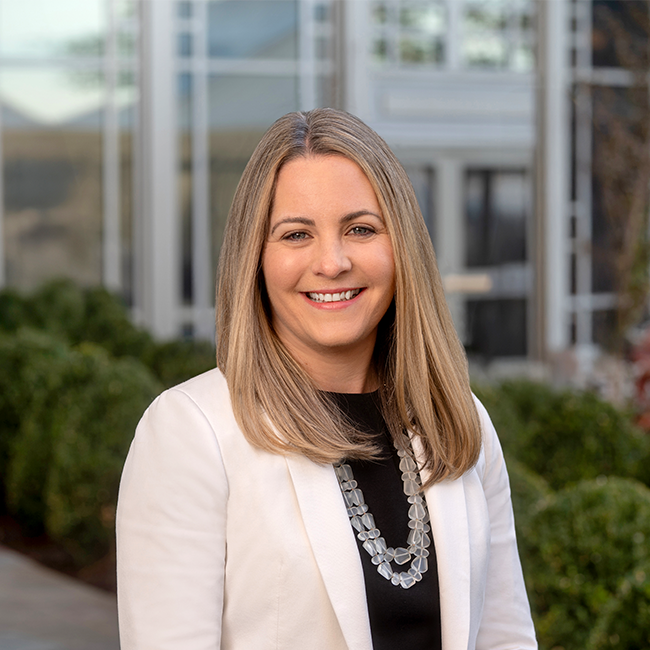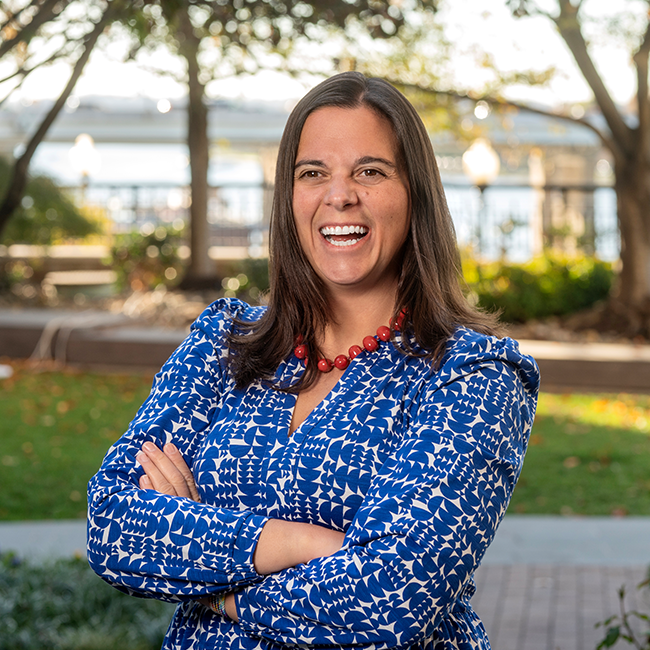|
The Honorable Bernie Sanders |
The Honorable Bill Cassidy, MD |
|
The Honorable Robert P. Casey, Jr. |
The Honorable Mike Braun |
|
The Honorable Tim Kaine |
The Honorable Susan M. Collins |
|
The Honorable Edward J. Markey |
The Honorable Markwayne Mullin |
Dear Chairman Sanders, Ranking Member Cassidy, and HELP Committee members,
On behalf of the Milken Institute, we are pleased to respond to your Request for Information (RFI) to support the development and identification of priority areas for the reauthorization of the Older Americans Act (OAA; P.L. 89-73, as amended; 42 U.S.C. 3001 et seq). This reauthorization presents a critical step forward to strengthen the broad range of services and programs for older adults, family caregivers, and individuals living with disabilities.
The Milken Institute is a global nonprofit, nonpartisan think tank focused on accelerating measurable progress on the path to a meaningful life. The Milken Institute’s Future of Aging team advances healthy longevity and financial security for all through research, convenings, multisector partnerships, and the elevation of high-impact policies and practices. Feeding Change at the Milken Institute is a team of food system experts who activate social and financial capital, engage policymakers and industry leaders, and convene key stakeholders to catalyze a more nutritious, sustainable, resilient, and equitable food system. Together, we have considered the questions in the RFI and developed recommendations for consideration.
The following recommendations reflect key priority areas for OAA reauthorization and include: (1) support older adults to age well in the places they call home, (2) enhance the direct care workforce and support family caregivers, and (3) improve nutrition and increase flexibility across meal programs.
Challenges Currently Facing the Older Adult Population
A profound demographic shift is underway in the United States. The US Census Bureau projects that by 2034, Americans 65 and older will outnumber those under age 18 for the first time in history— reaching an astounding 80 million by 2040, up from 55.7 million in 2020.[1] Those aged 85 and older, the group most often requiring assistance with basic care, are expected to nearly double, up from 6.7 million in 2020 to 14.4 million in 2040, a figure that will have quadrupled since 2000.[2]
At the same time, the US older adult population is becoming increasingly diverse. The percentage of older adults who identify as racial and ethnic minorities is projected to grow 105 percent over the next two decades,[3] and the LGBTQ+ older adult population is estimated to rise from 3 million to 7 million by 2030.[4] “Solo agers”—older adults who are childless, who live alone, and/or who are not married—have doubled in number since 2020.[5] Across all subgroups, Americans often underestimate the type and level of care they will need as they age.
As a result, families too often find themselves ill-prepared when needs arise, necessitating reliance upon the critical infrastructure of care and supportive services directed by the OAA.
The implications of this rapid population growth and increase in diversity are significant and coincide with expectations for aging that differ from those of earlier generations. The COVID-19 pandemic, with its disproportionate impact on older adults, particularly those in communal settings, prompted a call for substantial changes to the current long-term care (LTC) system. Innovation is already occurring across the public and private sectors, fueled by the recognition among policymakers, providers, and community leaders that the nation’s aging LTC infrastructure must adapt to the wants and needs of today’s and tomorrow’s older adults. The wide economic disparities found across these different population subgroups, the increasing shortages of direct care workers and caregivers, and the persistent barriers to affordable and accessible health care amplify these challenges.
In addition, food plays an important role in the health and well-being of older adults. Food insecurity among older adults is highly associated with adverse health outcomes, disproportionately affecting older adults who have incomes less than two times the poverty line, older adults with disabilities, and Black and Latino older adults.[6] Furthermore, older adults are at greater risk of diet-related chronic diseases and health conditions that can be modified by access to healthy foods and dietary intake.[7] Rates of food insecurity were lower 20 years ago than they are today. As the older adult population grows, this data trend is predicted to continue—pointing to an urgent need for action.[8] The OAA can improve access to healthy food for older adults to both meet their nutritional needs and reduce the burden of chronic disease.
Addressing these challenges and realizing opportunities requires a cross-sector and multifaceted approach that involves culturally inclusive care, tailored support services, policy initiatives to address systemic inequities among geographic locations and socioeconomic statuses, and expansion of the essential infrastructure directed by the OAA from the federal to community level.
Priorities for OAA Reauthorization
Priority 1: Support older adults to age well in the places they call home
Nearly 75 percent of older adults over age 50 want to age independently, preferring to remain in their homes and communities over traditional institutional settings.[9] To age at home as health and supportive care needs change, older adults require access to services like in-home care, meal delivery, and transportation.
Services offered through the OAA, such as those facilitated by Area Agencies on Aging (AAAs) in local communities, have the potential to meet these needs and defer or even avert the necessity for costly institutional care (for example, nursing home placement). This delay can also forestall financial depletion and prevent spending down to qualify for Medicaid in order to access care. By promoting the well-being of older adults through various Home and Community-Based Services (HCBS), OAA programs not only support older adults’ health and expectations to age in place but also address costs of housing and care at the federal, state, and individual levels.
One promising pathway for HCBS is to leverage shifts toward tech-enabled care and the ongoing integration of housing, health care, and supportive services. The previously sharp lines between brick-and mortar health care and home care are blurring, enabled by shifts to virtual care and the rapid expansion of telehealth during the COVID-19 pandemic. A new care ecosystem is emerging where care in the home, previously narrowly conceived as traditional home health services, is integrated with health care, and exists on a spectrum that considers patients’ fluctuating needs over time. In 2022, the Milken Institute published the Advancing Tech-Enabled Health and Home Care report, which presented several consensus built recommendations, including implementing larger-scale policy and program-design changes to expand the availability of care in the home through technology.
Program and payment models incorporating tech-enabled care in the home are critical supporting factors for older adults seeking to age in their homes and communities. These models have been used for hospital and skilled nursing facility-at-home care, remote monitoring, longitudinal care management for chronic conditions, and connecting home care and medical providers, to name a few examples. Although the importance of advancing technology-driven innovation in HCBS was clear before the COVID-19 pandemic, the past four years illuminated the potential for the expanded role of OAA programs in this new landscape, enabled by policy change supporting virtual care and integrated care.
While traditionally adept at coordinating the social aspects of care, AAAs have increasingly demonstrated their capacity to collaborate effectively with health-care systems and community-based organizations. These efforts can be scaled and enhanced using technology and data.
For example, Community Care Hubs facilitate effective transitions for individuals from acute care settings to their homes,[10] and they are yielding improved health outcomes and reduced rates of rehospitalizations. By serving as Community Care Hubs, AAAs are primed to address disparities in access across diverse demographics through their central positions in community networks. Their footprint in this area should be expanded, along with continued AAA participation in livable community initiatives (LCIs).
LCIs are local efforts that unite the public and private sectors (e.g., government agencies, health-care systems, and social service providers) to enhance the health and well-being of older adults.[11] As the entities tasked with planning and coordinating aging services locally, AAAs may assume the responsibility of bringing together stakeholders in LCIs, gathering data, formulating plans, and aiding in their execution. Looking beyond traditional health-care systems, major retailers, such as CVS Health and Walmart, have grown their footprints in rural communities to provide a wide variety of services incorporating tech enabled care through ancillary-care sites. They serve as critical access points for care with the potential to improve health equity in rural communities. The Milken Institute recommends that AAAs capitalize on their unique position and current infrastructure established through livable community initiatives by increasing partnerships with health-care systems and major retailers offering tech-enabled care in communities.
Priority 2: Enhance the direct care workforce and supporting family caregivers
Much of the work of HCBS is performed by more than one million direct care workers, including personal care aides and home health aides, who deliver long-term services and supports (LTSS). HCBS also serve more diverse populations than nursing homes and other institutional settings. However, increasing demand for LTSS—along with the long-standing impacts of the pandemic, tight labor markets, and high turnover rates—has resulted in workforce gaps across all long-term care settings.
Bipartisan interest in tackling direct care workforce shortages continues to build. Congress has taken several significant steps, including several new initiatives via the Administration for Community Living’s (ACL) Direct Care Workforce Strategies Center, but they remain limited in scope. To effectively address the persistent challenges in recruiting and retaining direct care workers, comprehensive policy reforms are essential.
The current gaps in care experienced by individuals living with comorbidities and chronic conditions (e.g., diabetes, dementia, and heart disease) and their families demonstrate the need to improve provider training and include family caregivers as part of interprofessional care teams. Moreover, direct care workers should be encouraged and incentivized to seek training and/or certifications, such as for care navigation.
Care navigation is defined as “individualized assistance offered to patients, families, and caregivers to overcome health-care system barriers and facilitate timely access to quality health and psychosocial care.”[12] It has been proven as an effective role for diabetes management and cancer care.[13] In 2021, the Milken Institute released a report, Building Workforce Capacity to Improve Detection and Diagnosis of Dementia, generating six recommendations to improve the dementia-capable health-care workforce, including a framework to scale dementia-care navigators across settings. This report was critical in informing the recent introduction of CMMI’s Guiding an Improved Dementia Experience (GUIDE) model. Building upon this momentum in the dementia-care space, the Milken Institute recommends that services used to coordinate and provide care navigation for all chronic conditions be applied and defined while tailoring care management to older adults receiving support from AAAs.
Care navigators may be licensed (e.g., NPs, PAs, or social workers) or paraprofessionals with a particular certification or required training. Effective care navigators partner with individuals and their families to identify care needs and aid in navigating health-care system-related access barriers through ongoing disease education, counseling, referrals to community-based supports, and ensuring safe living environments. Elevating the role of care navigators on interprofessional care teams can help facilitate coordination and access to needed services, support family caregivers managing health-care and long-term care systems, and improve the overall quality of life for individuals aging with complex chronic conditions.
AAAs should direct recruitment efforts and adopt training curriculums for care navigators as defined by OAA regulations. Specifically, AAAs can leverage partnerships with community-based organizations that employ frontline public health workers, such as community health workers (CHWs) and Spanish-speaking CHWs referred to as promotores.[14] CHWs provide a link between communities and health and human service agencies, providing highly trusted and culturally competent support, advocacy, and education. Specifically, CHWs and promotores are well-equipped to address rural health access issues and ultimately assuage structural vulnerabilities and inequities.
Priority 3: Improve nutrition and increase flexibility across meal programs
Title III of the OAA is essential for improving nutrition to promote health for older adults. There have been many lessons learned through the COVID-19 pandemic response related to congregate meals (C1) and home-delivered meals (C2) that should be incorporated into the OAA reauthorization.
Congregate meals (C1) have been a key program to provide good nutrition for older adults while reducing social isolation. However, under occasional specific circumstances, individuals may not be able to sit down for a meal, such as if they have a doctor’s appointment scheduled. The Milken Institute recommends authorizing a modification of congregate meals to allow for a grab-and-go option under specific circumstances. This modification would allow individuals to participate in congregate meals most of the time but receive grab-and-go meals when specific circumstances arise. This flexibility would promote nutrition and socialization without creating a new program that would take funding from C1 or C2.
Home-delivered meals (C2) have been essential to improving access to food and nutrition among older adults, particularly during the COVID-19 pandemic. There are opportunities to further improve the health of older individuals with specific health conditions where diet plays an important role. The Milken Institute recommends a pilot for medically tailored meals (MTM) offered through the home-delivered meals program to better meet the nutritional needs of older adults with severe diet-related illnesses. MTMs are ready-to-eat meals designed by a registered dietitian to address the medical needs of patients and are provided in combination with education in the form of nutrition counseling or medical nutrition therapy with a registered dietitian nutritionist.
During the COVID-19 pandemic, AAAs had the flexibility for funding to be reallocated between C1 and C2 depending on the needs of their respective populations served, allowing funds to be redirected based on necessity. The reauthorization process is an opportune time to unify C1 and C2 into a singular funding stream and nutrition program that includes several authorized program options under it. The Milken Institute recommends establishing a cohesive III C Nutrition Services framework, accommodating various authorized program options within it and allowing for flexibility to allocate funding to meet local needs of older adults. Under a unification, all III C–authorized activities would be consolidated into a single funding stream to improve provision of person-centered services while eliminating the need for C1-C2 transfers, a frequent barrier for more effective use of nutrition funding. State Units on Aging (SUAs) and AAAs would be responsible for distributing funds across the various subcategories of services based on local needs.
OAA programs provide critical infrastructure enabling older adults to age well in the places they call home, enhancing the direct care workforce, supporting family caregivers, and improving nutrition to promote health for older adults. Thank you for the opportunity to provide information on these priorities for the OAA and for considering the Milken Institute’s recommendations during the development of OAA reauthorizing legislation. The Milken Institute stands ready to provide additional detail on the information above and serve as an ongoing resource to the HELP Committee.
Sincerely,
Diane Ty
Managing Director, Future of Aging
Milken Institute
Holly Freishtat
Senior Director, Feeding Change
Milken Institute
Lauren Dunning
Director, Future of Aging
Milken Institute


























